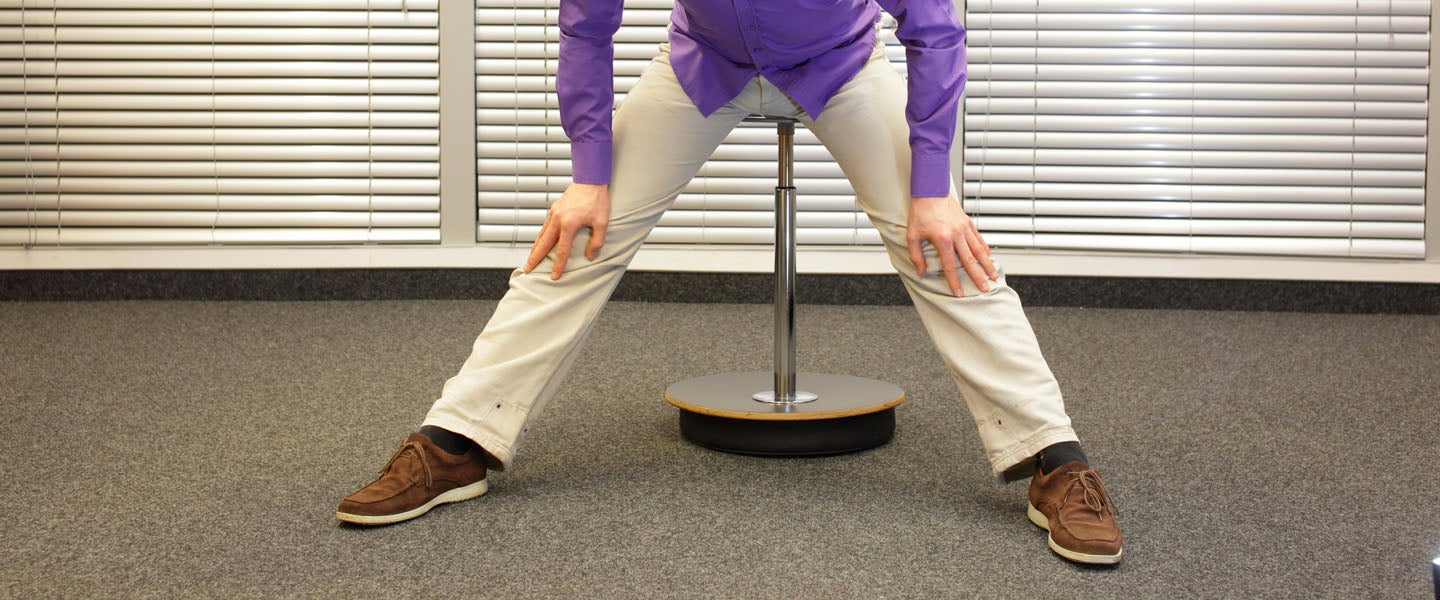My posture sucks. If a camera is around and photos are being taken, I know how to elongate my neck, energize my fingertips and breathe space into my upper back in order to look stronger and more relaxed. But when left to my own devices during an average office-bound workday, I often find myself sitting like a sea creature without vertebrae instead of an alert employee, slouching back into my chair with my spine curled or pouring my top half onto my desk for support as I type.
And so, between the way I sit and the amount of time I spend sitting, I feel like I’m on a never-ending quest to release my tight, crunchy sacrum, the triangular base at the back of our spines that sits between the “wings” of the pelvis. It’s connected to the rest of our spinal vertebrae, supporting our spinal nerves, as well as our hip bones. Sacrum issues are one of the main reasons why “yoga for back pain” searches are so popular, and why cross-body, “supine spinal” twists are so addicting. Basically, most of us who sit a lot are always looking to elongate and decompress our lower back, because the weight of our own body while sitting with bad posture can smash those parts of our spine like a panini.
Besides self-confidence — my posture is probably my biggest insecurity — having bad posture at work isn’t exactly good for your career either (even if you work alone, as I mostly do). I think of my friend Alexis Blair Penney, an excellent yoga teacher, who always tells me how his posture influences his mood. As such, I’m constantly reminding myself, “Don’t slump your shoulders at your desk if you don’t want to be in a creative slump.”
That’s why I’ve dropped to my knees.
On a kneeling chair, that is.
While some experts recommend standing at your desk for at least 30 minutes a day to see health benefits, my standing-and-working posture sucks, too. In particular, I find it challenging to keep my shoulders away from my ears when also standing over the laptop I’m working on. For the last week then, I’ve used an ergonomic kneeling chair in place of my usual office chair, which is more familiar than it is comfortable and must be a decade old.
The original ergonomic kneeling chair is the Norwegian Varier Variable Balans ($399.99). “Balans” means balance, referring to the functionality of the chair in terms of distributing both your weight and body geometry. I, however, opted for a cheaper variety, this DRAGONN ergonomic kneeling chair, which retails for $129.99 but was on sale for $75 when I bought it.
Admittedly, the name is a bit of a misnomer as it’s more like a stool than a chair. (For proof, I made my gearhead dad sit on it, and he said it was like a mechanic’s “brake stool.”) Another complicating factor: At first glance, you wonder how the hell you’re supposed to sit on something that looks so unsupportive. That said, once you actually perch your ass on its elevated base, the comfort of such a seating arrangement is revealed. Your butt sits elevated behind you (duh) as your knees bend in front of you and rest on a thick, comfortable pad that sends your toes underneath your ass.
Best of all, it instantly improves your posture, lengthening your spine and activating your core muscles to keep your body up despite not having a physical back support to rest upon. I expected this aspect of the chair to be much more painful. Maybe I’m just lazy, but I wasn’t even sure I’d be strong enough to sit with great posture at a chair I can’t lean or rest on. That isn’t the case though. The sensation reminds me of when a yoga teacher recommends a precise pose you never would have tried on your own, but feels amazing, like melting into the earth. Likewise, the kneeling chair doesn’t take much effort because it’s designed to support your body so intentionally. So while I thought it was going to feel like a punishment, it’s more like a treat.
In fairness, the kneeling chair simply solves the first part of the posture equation. That is, it’s easy to have good posture when your body is aligned correctly. It’s also not completely painless. Primarily, my legs do get tired of being folded while seated at the chair, but I simply move them to one or both sides of the stool and find a new balancing point whenever it happens.
Tired legs or no tired legs, though, ever since I started to spend my days at the office on my knees, my focus is stronger and my attitude is better — and I haven’t had any back pain since I began using it. A friend even complimented my posture the other night, a literal first.
So if you need me, I’ll be kneeling.

